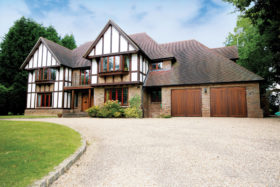

Imagine that Elvis had died earlier in his life.
Imagine that he blazed brightly with his early, revolutionary rock ‘n’ roll, but then never lived to make those vaguely naff films or turn into a white blob covered in rhinestones in Vegas.
If all we had to remember him were those first few extraordinary songs, how would we see him today?
If you can picture this, it is the closest that you can get to understanding how most architects feel about Charles Rennie Mackintosh.
Last weekend I met up with the Scottish members of the ASBA architects network. A good time was had by all, but I was particularly delighted that the meeting was in Glasgow. Having travelled up to this magnificent city from the East Midlands, I couldn’t resist the opportunity to sneak off and visit the Hill House in nearby Helensburgh – a long held ambition.
If I had a ‘bucket list’ this pilgrimage would certainly have been on it. C R Mackintosh was one of the very few British designers who produced entire houses in the Art Nouveau style and this wonderful home is the most complete example that survives. All I could do was wander around it and try not to drool too much.
There are plenty of books by eminent writers who can describe how he and his wife, Margaret Macdonald conceived and developed the buildings.
He worked mainly on the form, construction, space and light. She devised and executed many of the famous graphic designs and artworks that are associated with the Mackintosh brand.
Although his name alone has been attached to the buildings that they worked on, in my opinion she deserves equal billing, not only for her creative talent but also for sticking by him and holding him together during the worst of his alcoholic hazes.
Sadly they were not well supported by colleagues and the architectural community at the time, who decided that the more impersonal classical style was the future and considered his buildings both eccentric and old-fashioned. His best work was over by his early forties and after the war he abandoned architecture almost entirely.
He never lived to experience the world-wide adulation for his designs, which we now realise were unique.
His Glasgow School of Art, which is near the centre of the city just off Sauchiehall Street, is regularly voted Number 1 in international polls of architects’ favourite buildings.
So if you are ever in Glasgow and you love architecture, I strongly recommend that you purchase the books below and take the opportunity to experience the remaining work of these two profoundly influential Scottish designers.
Recommended Reading:
‘Visiting Charles Rennie Mackintosh’ by Roger Billcliffe. An excellent pocket sized guide to all his buildings, with photos and directions for each one.
‘Charles Rennie Mackintosh: Architect, Artist, Icon‘ is a well-illustrated record of his work by John McKean
Photos: Top illustration from a tea towel available from The Glasgow Girls; Interior of Hill House from ‘Arts & Crafts Houses II’ by Phaidon Press (even though the house is not in the Arts & Crafts style); Exterior of Hill House by Julian Owen (julianowen.co.uk)

